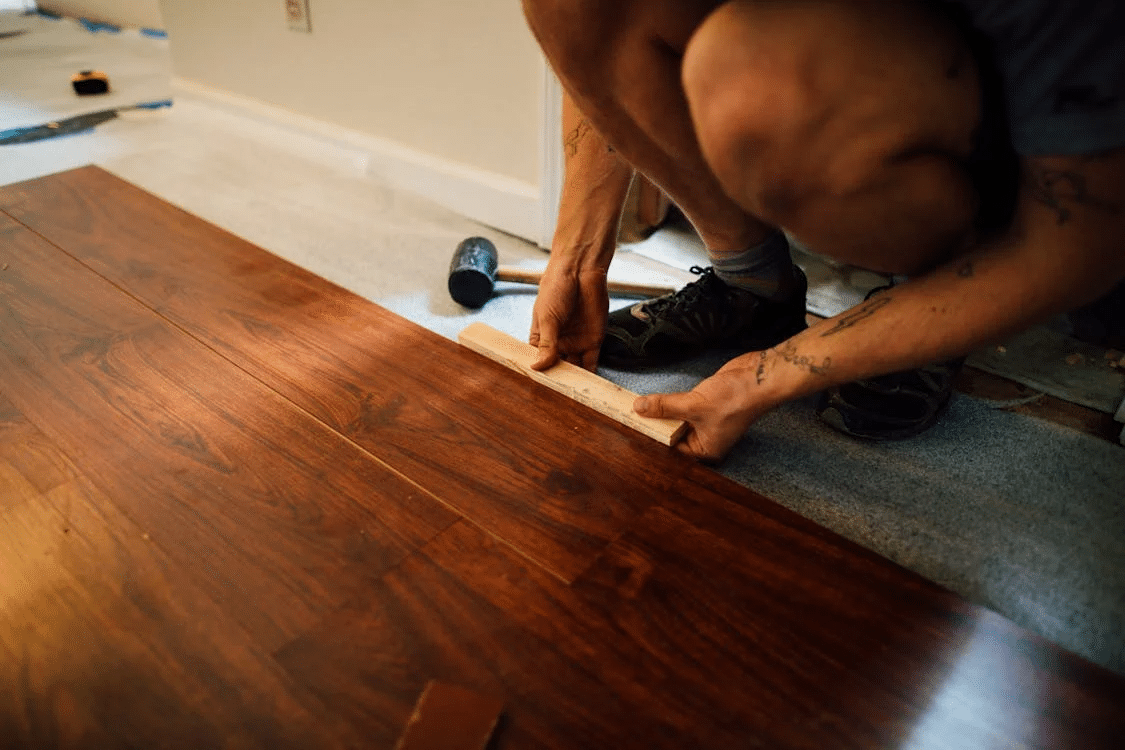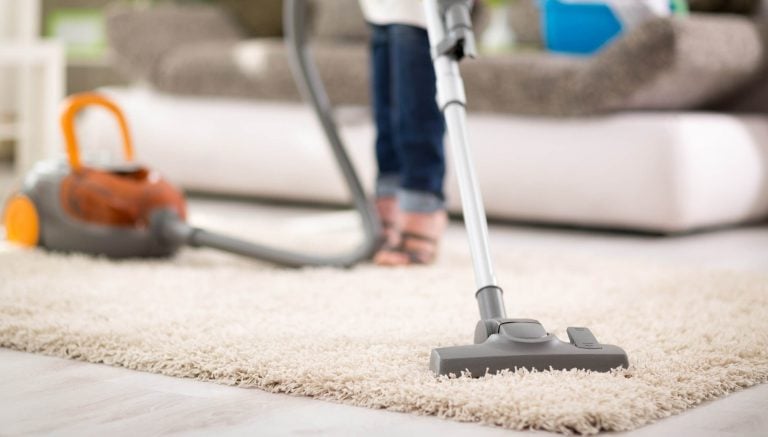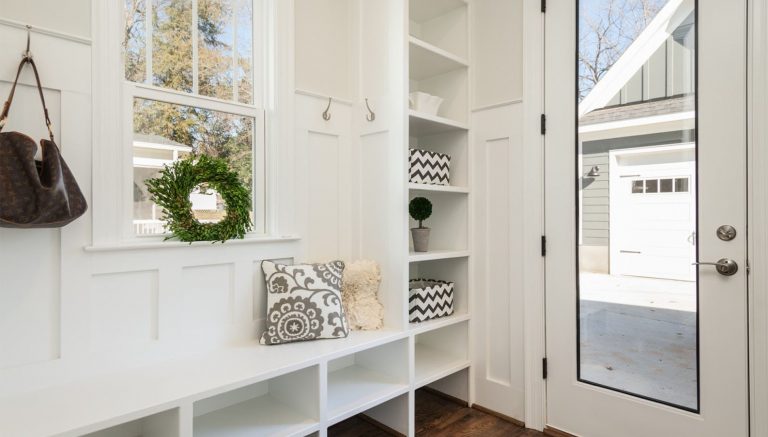The Ultimate Guide to Engineered Wood Flooring: Elegance, Durability, and Versatility for Every Home

Table of Contents
Beyond imparting elegance, warmth, and character to living spaces, engineered wood floors deliver versatility, spanning aesthetics to performance attributes tailored for nearly every home situation.
By structure, engineered hardwood consists of minimal top “wear layer” wood veneers fused to stabilize multi-layer plywood cores through intense pressure and heat treatments.
Key Advantages of Engineered Wood Flooring
Engineered wood flooring offers several advantages that make it a popular choice for homeowners and interior designers alike:
- Stability: Multi-layer cross-pattern cores strongly resist buckling, swelling, or deforming issues common with solid woods stemming from environmental moisture fluctuations. Engineered stability unlocks installations anywhere —from basements and bathrooms to kitchens or mud rooms—without concerns over shifting, separation anxiety, or unsightly gapping, especially in extremely dry or humid climates.
- Versatility: Wider planks, customized colors, exotic imported species, refined hand-scraping, long narrow cuts, and mixed-width options dramatically elevate design versatility over traditional solid woods restricted to narrow domestic species and finish selections.
- Durability: Scratch, moisture and sheer toughness advantages inherent within dense plywood substrates make engineered woods suitable for high-traffic commercial applications alongside active households thanks to amplified rigidity and compression resistance compared to natural solid woods prone to dents.
- Cost-effectiveness: Concentrating expensive decorative wood veneers atop value-based plywood cores optimizes precious lumber yields multiplying available square footage coverage significantly over solid woods constrained by smaller fixed dimensions at a given price point.
- Easy Installation and Maintenance: Uniformly bonded multi-layer planks install and refinish far easier without concerns over irregularities or bonding issues that could develop over time with solid wood’s tendency to expand, cup, or warp with environmental changes.
Different Styles of Engineered Wood Flooring
Engineered wood flooring is available in a plethora of styles to cater to diverse tastes and design preferences:
- Wood Species: Hundreds of domestic and exotic wood species feature unique grains, textures, densities, and colors from traditional maple and oak to Brazilian walnut or bamboo spanning the spectrum from bleach white to near jet black.
- Finishes: Matte, hand-scraped, wire-brushed, and glossy polyurethane coatings dictate final sheen appearances and depth of texture aligned with room motifs. Consider reflectivity and ambiance goals within spaces when selecting polish levels.
- Colors: Permanent penetrating stains offer limitless customization opportunities through subdued vanilla creams to dramatic grays or even vivacious Caribbean blue hues. Tonal variation levels provide additional flair.
- Plank Sizes: From classic narrow 2 1??4” strip flooring to expansive 7-inch-wide planks and rift-cut boards extending 7+ feet, scaled dimensions align with room sizes for best optical impacts.
Installation Methods for Engineered Wood Flooring
Engineered wood flooring can be installed using three main methods:
- Nailed Down: Boards feature integrated tongues and grooves along with blind-nailed undersides allowing secure attachments directly into wooden subfloor decking while concealing fasteners.
- Glued Down: Professional-grade adhesives bond planks directly onto suitable concrete floors following extensive preparations and required curing times.
- Floating Floor: Interlocking tongue and groove long edges alongside padded underlayers allow “floating” installations overlying existing surfaces without attachments through boards or subfloors. Great for renovations or rental properties.
Maintenance Tips for Engineered Wood Flooring
To keep your engineered wood flooring looking its best for years to come, follow these maintenance tips:
- Regular Cleaning: Frequently vacuum or sweep floors removing abrasive debris like dirt, rocks, or pet hair that damages flooring and finish coatings once ground beneath shoes.
- Damp Mopping: Routinely mop using specially formulated hardwood cleaners mixed with room temperature water keeping excess moisture limited to planks.
- Protect from Scratches: Immediately apply felt pads underneath furniture legs at assembly and strategically place mats suppressing damage from active pets or heavy item placements prone to shifting over time.
- Address Spills Promptly: Thoroughly wipe up moisture from spills, rainwater or snow melt contacting floors to avoid wood swell and finish clouding or peeling issues stemming from pooled liquids or chronic humidity.
- Refinishing: Depending on wear levels, reapplying protective urethane finishes maintains appearance and integrity lasting decades before full sanding becomes necessary. Consult pros periodically.
Choosing the Right Engineered Wood Flooring for Your Home
When evaluating the array of beautifully engineered species and finishes to discover your perfect sustainable flooring, weigh several decisive factors:
- Lifestyle and Traffic: For high-traffic zones like busy entryways, kitchens or commercial spaces specify ultra-wear-resistant species for enduring abuse. Meanwhile, cushy bedroom remodels may incorporate delicate hand-scraped finishes without durability reservations.
- Budget: More affordable oak, maple, or bamboo generally satisfies budgets under £7/ft2 while imported woods, custom stains, or intricate artisan hand-distressing raise costs dramatically to the tune of £15+ per square foot once fully installed.
- Style and Design: Ensure tones, grains, and plank sizes harmonize with the intended room aesthetics and architecture. For modern styling, expansive European walnut evokes sleek elegance. Traditional homes may incorporate classic strip hickory patterns.
- Installation Method: The final installation methodology depends on feasibility constraints across existing floor tear-outs, subsurface preparations, moisture mitigation needs, and integrated underfloor heating desires.
- Maintenance: Prepare to uphold cleaning, mopping, and scratch prevention habits aligned with wear expectations associated with species softness/oiliness and finish vulnerability considerations influenced by high-traffic conditions.
Engineered Wood Flooring vs. Solid Hardwood Flooring
Versatile engineered wood flooring and solid hardwood flooring are both popular choices for homeowners, but they have some key differences that you should be aware of:
- Construction: Engineered uses thin hardwood veneers while solid utilizes full-length lumber planks. Thickness ranges from 3/8” for engineered versus 3/4″ minimum for solid products.
- Stability: Multi-layer engineered cores resist moisture fluctuations and dimension changes dramatically better through seasons and humidity shifts reducing gapping.
- Cost: Generally, engineered runs are $4-7 per square foot installed while premium solids reach $9+ for domestic species before intricate pattern work, custom stains, or exotic material additions.
- Refinishing: While engineered tolerates resanding for decades conditional on initial veneer thickness, solid woods offer unlimited refinishing over hundreds of years before lumbar dimensions become overly compromised.
- Installation: Engineered accommodates gluing, nailing, or floating options while solid limits applications to strictly nailed or glued methods for ideal performance. However, solid allows intricate custom patterns impossible through veneered planks.
Top Trends in Engineered Wood Flooring
The world of engineered wood flooring is constantly evolving, with new trends emerging regularly. Here are some of the top trends to watch out for:
- Wide Plank Flooring: Extra-wide planks exceeding 5 inches visually expand smaller spaces dramatically while amplifying rustic or modern edges through bold designs. Durable oak and exotic eucalyptus species prove particularly well-suited for grand plank statements.
- European Oak: Prominent graining, comforting hues, and exceptional finishing potential make European oak species ever-desirable for low-maintenance but refined living spaces against modern or farmhouse decors alike.
- Gray Tones: Subtle white-washed gray staining provides an adaptable neutral backdrop for ornate furnishes and wildly colorful accent walls to pop within interior schemes, the versatile compromise between light and dark spectrums.
- Wire-Brushed and Hand-Scraped Finishes: Increasingly popular artisan-crafted surfaces amplify texture and perceived worn “heritage” by gently removing wood layers manually for added depth without compromising long-term durability.
- Sustainable and Eco-Friendly Options: Conscious designers increasingly specify renewable bamboo compositions, FSC-Certified tracing, and low-VOC adhesives/finishes upholding biodegradability or recycling processes giving used planks renewed purpose.
Conclusion
Engineered hardwood floors undoubtedly represent pinnacles in flooring innovation realized through sustainable material optimization, precision manufacturing arts, and enduring natural elegance transcending spaces from relaxed coastal cottages to soaring urban lofts equally.
By thoughtfully factoring intended uses, architectural goals, lifestyle needs, and decor preferences during the selection process, meticulously refined versatile engineered wood flooring delivers ageless investments in refined beauty, paying unlimited daily dividends through added property value, earthen warmth, and welcoming comfort underfoot for generations beyond temporary interior trend fads.




